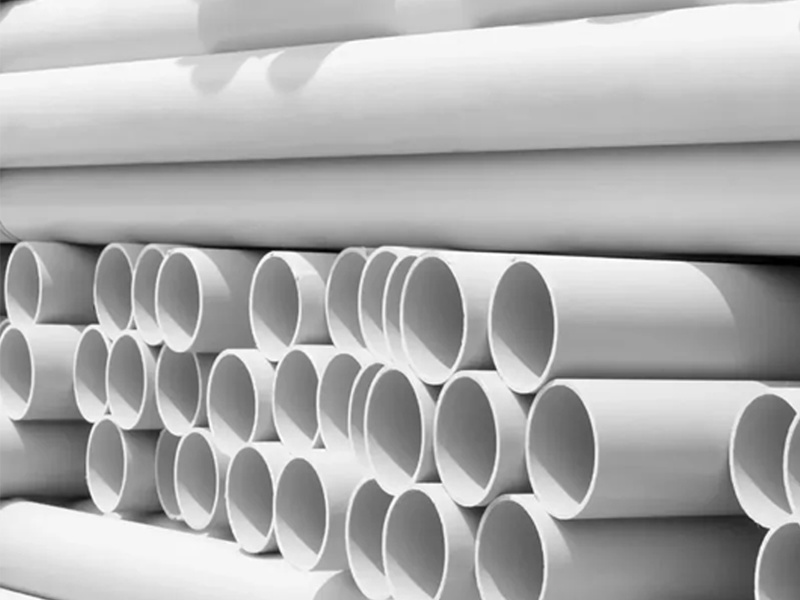Causes and preventive measures for the low-temperature brittleness of PPR pipes in winter
2025-06

Causes and prevention measures for low-temperature brittleness of PPR pipes in winter
As we all know, PPR pipes exhibit low-temperature brittleness and can crack under external impact or heavy pressure. So what causes this phenomenon, and how can it be prevented?
1. Why do PPR pipes exhibit low-temperature brittleness?
Answer: PP-R is a random copolymer of polypropylene, also known as Type III polypropylene. It is obtained by the random copolymerization of propylene monomers and a small amount of ethylene monomers under heating, pressure, and catalysis. Ethylene monomers are randomly distributed in the propylene long chains, with the ethylene monomer content generally controlled between 3-5%. The ethylene content and the polymerization method of ethylene and propylene determine its cold brittleness characteristics. At lower temperatures, especially during winter construction, the flexibility of the pipe material decreases, and the rigidity increases, exhibiting brittleness. Under external impact or excessive unexpected loads, the pipe material may crack linearly, causing inconvenience to construction. Therefore, relevant national standards have made clear requirements for this issue.
During winter construction, the low-temperature brittleness of polypropylene (PP-R) pipes for building water supply should be noted, and corresponding construction plans should be formulated. GB/T50349-2005 provides detailed regulations on this.
2. Manifestations of PPR pipe cold brittleness in practical applications
Answer: When the ambient temperature is low, the toughness of PPR pipe materials decreases, exhibiting brittleness. When the pipe material is subjected to external impact or heavy pressure, linear cracking will occur, starting from the inner pipe and extending to the outer pipe. After cracking caused by the force acting on one point, this cracking will rapidly grow along the axial direction of the pipe material in an instant. This characteristic is called rapid crack growth. In winter, pipe materials may be damaged by external forces during transportation, on construction sites, and during installation, resulting in brittleness and toughness (when transporting hot water) and pipe bursts during use.
3. A common misconception: PPR water pipes that can be cracked are poor-quality pipes
Answer: This judgment method is incorrect. Whether a PPR pipe can be cracked is a misconception in judging the quality of PPR. This cannot test whether the PPR is good or bad, because the performance of PP-R material itself changes to a certain extent with the ambient temperature. At lower temperatures, especially in winter, the flexibility of the pipe material decreases at low temperatures, the rigidity increases, and it exhibits brittleness. Under external impact or excessive unexpected loads, the pipe material may break, causing inconvenience to construction.
Therefore, relevant national standards have made clear requirements for this issue. During winter construction, the low-temperature brittleness of polypropylene (PP-R) pipes for building water supply should be noted, and corresponding construction plans should be formulated. GB/T50349-2005 provides detailed regulations on this. Conversely, some counterfeit and inferior PPR pipes with other added raw materials are not easy to break! Genuine PP-R pipes that can transport both high-temperature hot water and cold water and can be used for 50 years can be cracked, especially at lower temperatures. This is the low-temperature brittleness of PP-R.
If a PP-R water pipe cannot be cracked, it can basically be determined that it is not made of genuine PP-R material. The main advantage of PP-R pipes lies in their high creep resistance.
Good pipes made of pure PP-R material have low-temperature brittleness, which is particularly obvious in environments below 5℃. Therefore, good pipes can be cracked, while those that cannot be cracked are often not PP-R pipes, but PP-B pipes for transporting cold water or pipes containing other materials.
4. How to avoid cold brittleness cracking of PPR pipes in practical applications
Answer: 1) During handling, PPR pipes must not be thrown, dropped, rolled, or dragged;
2) Pipe materials should be stored in warehouses and simple sheds, and the stacking height should not exceed 1.5m.
3) During construction, the following should be done:
① PPR pipes have lower hardness and rigidity than metal pipes. They should be protected during handling and construction to avoid mechanical damage caused by inappropriate external forces. After concealed installation, the pipe location should be marked to prevent damage to the pipes during secondary renovation.
② PPR pipes have a certain degree of low-temperature brittleness below 5℃. Care should be taken during winter construction, and sharp tools should be used for slow cutting. Installed pipes should not be heavily pressed or struck. If necessary, protective materials should be used to cover parts that are easily subjected to external forces.
③ Before cutting pipes, if whitening due to external forces is found on the pipe material, the pipe material cannot be used.
④ Before hot-melt connection, carefully check whether the pipe material is damaged. Pay special attention to the inner wall, because when the pipe material is subjected to external force, the inner wall cracks first, then the outer wall. Avoid using pipe materials whose inner wall has cracked but the outer wall is intact.
⑤ After pipe installation, pressure testing must be performed before direct burial and non-direct burial concealed installation. The pressure test pressure for cold water pipes is 1.5 times the system working pressure, but not less than 0.9 MPa; the test pressure for hot water pipes is twice the working pressure, but not less than 1.2 MPa.
5. Related phenomena
1) Cracks are found in the pipe material during home decoration.
2) Pipe material breakage is found when PPR pipes are pre-embedded.
3) Linear cracks appear in PPR pipes during pressure testing or after a period of use.
4) Cracks appear in the pipe material welded to the pipe fittings after a period of use of PP-R
Contact Us
Fax:+86-0750-8989968
Address:No. 3, Road 3, Heceng Industrial Zone 3, Heshan City, Jiangmen City, Guangdong Province



